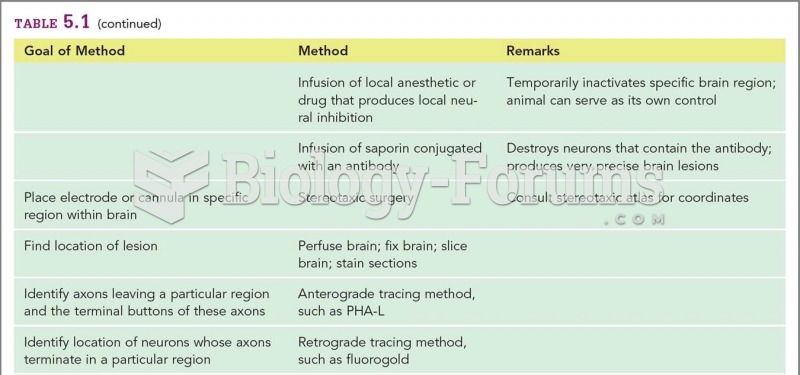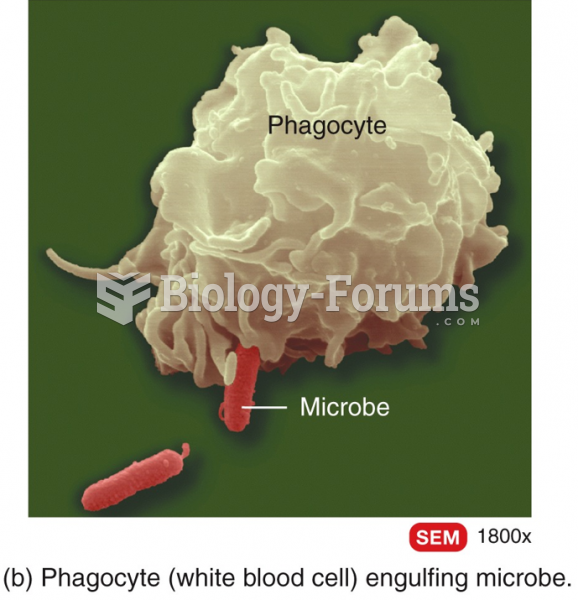|
|
|
Approximately 500,000 babies are born each year in the United States to teenage mothers.
Human stomach acid is strong enough to dissolve small pieces of metal such as razor blades or staples.
A seasonal flu vaccine is the best way to reduce the chances you will get seasonal influenza and spread it to others.
The first monoclonal antibodies were made exclusively from mouse cells. Some are now fully human, which means they are likely to be safer and may be more effective than older monoclonal antibodies.
About 60% of newborn infants in the United States are jaundiced; that is, they look yellow. Kernicterus is a form of brain damage caused by excessive jaundice. When babies begin to be affected by excessive jaundice and begin to have brain damage, they become excessively lethargic.







